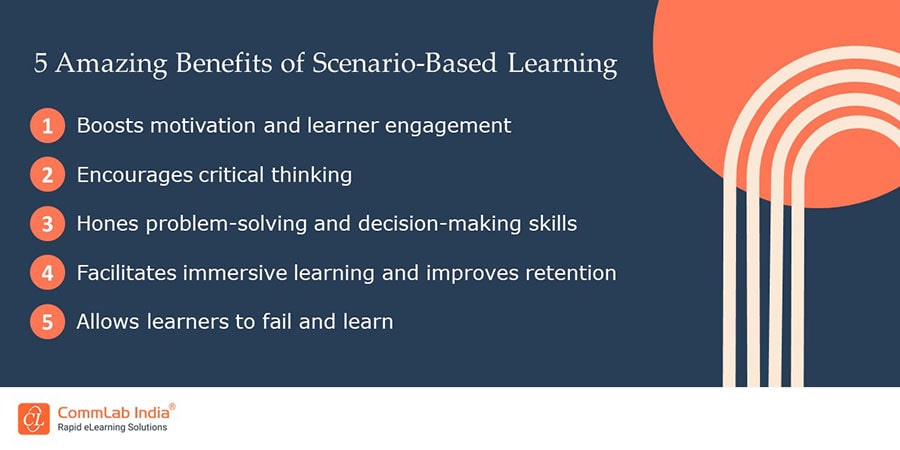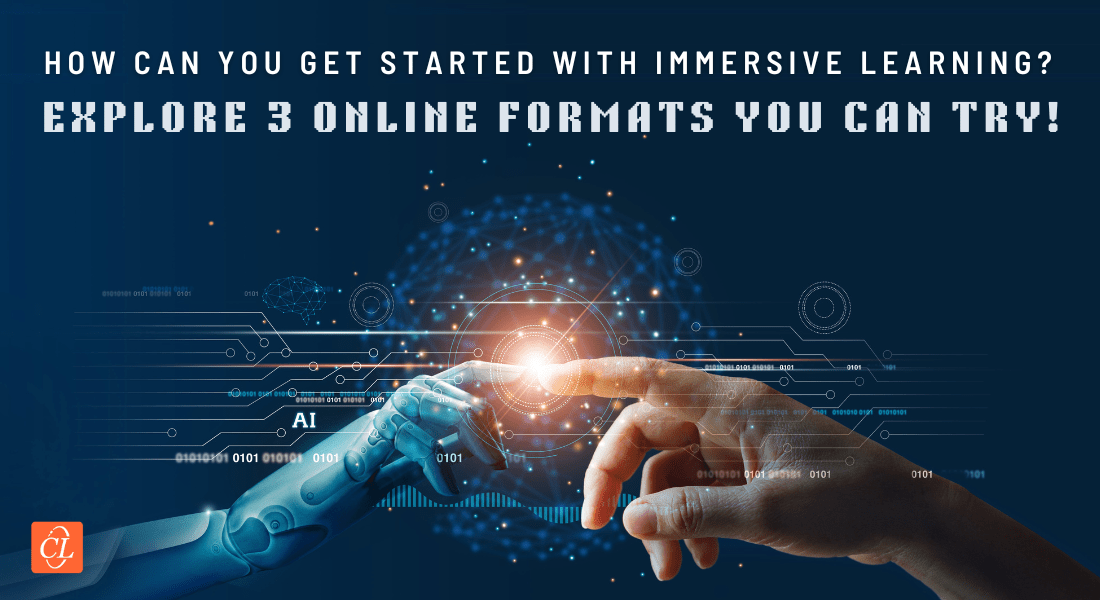Instructional Design Strategies to Design an Impactful Immersive Learning Program
Immersive learning is the way ahead for effective corporate training. Read on to learn about key strategies to design immersive learning programs.

Learning and development (L&D) is crucial for organizations to keep up with the rapid advancements in the modern business landscape. Companies are keen to invest in new and advanced learning strategies to equip their workforce with the latest trends, tools, and technologies and stay at par. Immersive learning is one such strategy that’s gaining popularity in recent times and is helping organizations achieve desired results. Read the blog to understand what immersive learning is, the benefits that it offers, and popular instructional design strategies to design an impactful immersive learning program.
Immersive Learning is the Future of Effective Corporate Training
Explore key instructional design strategies to craft immersive learning programs:
- Scenario-based Learning
- Simulations
- Gamification
- Video-based Learning
- AR/VR
What is Immersive Learning?
With the advent of technology in the corporate L&D domain, there has been a parallel advancement in the way learning content is delivered. Creative and innovative ways to impart training are what lead to the success of training initiatives and here’s where immersive learning steps in. For those who are new to the concept, immersive learning is a new-age learning strategy that puts learners in an interactive learning environment close to real-world work scenarios. The learners are offered challenges that immerse them in the situation and encourage them to make decisions. Scroll down to learn more about the benefits of immersive learning.
→ Download eBook: State of Learning: 2023 and Beyond
What are the Benefits of Immersive Learning for Corporate Training?
Immersive learning offers a bunch of benefits. No wonder organizations are keen to integrate it into their training frameworks to enhance the effectiveness of their training programs. Immersive learning experiences not only involve learners in the concept but also hone their critical thinking and problem-solving abilities. Let’s look at some of the key advantages that it offers:
Increased Learner Engagement and Retention
With most organizations shifting to online training formats, learner engagement is a major concern for L&D managers. Immersive learning addresses this issue as it offers learning experiences that provide a high level of learner engagement. Learners get involved in the content and this leads to better retention of the concept learned.
Watch this video to get tips on how to boost learner engagement during corporate training.
Enhanced Employee Performance and Productivity
L&D plays a key role in boosting employee performance and productivity. Immersive learning experiences lead to better consumption of knowledge and reduced time to proficiency. The application of the learning is quick, and it boosts productivity and overall performance of employees.
Safe Practice Environments
It is a proven fact that people learn better by doing. When you offer an immersive learning environment to learners, they get the scope to have hands-on experience of real-life work situations. Learners learn better as they have the freedom to learn by making mistakes in a risk-free environment. This boosts their confidence to take up future work challenges and make better decisions.
Better Engagement for Remote Employees
Crafting engaging training programs is certainly not a cakewalk. Especially when you are doing it for your remote learners as they are already in an isolated environment. Immersive online learning formats enhance learner involvement and help reduce distractions.
What are the Instructional Design Strategies for Immersive Learning?
Now that you are aware of the multiple benefits offered by immersive learning, you must be looking forward to implementing it in your organization. Well, here are a few instructional design strategies that offer effective immersive learning experiences:
Scenario-Based Learning
Stories draw learner attention. Crafting an engaging storyline and presenting scenarios that mimic real-life work situations is a fantastic way to immerse learners in the training content. It hones learners’ critical thinking and problem-solving skills and helps them make better decisions at work. Using AI avatars for building scenarios facilitates better presentation of content and can help your learners connect well with the content.

Simulations
Learning by doing has a greater impact as it boosts learning. Watch-try-do simulations offer great hands-on practice to learners, especially for performing critical high-risk tasks such as those of surgeons and army staff. Simulations are also wonderful for acclimatizing learners to new software launches. Your employees can get hands-on experience with the new software that’ll ease their workflow and accelerate time to proficiency.
Gamification
Gamification is an immersive learning format that makes learning enjoyable. It’s sometimes challenging to keep your learners glued to the training content, especially when the topic is uninteresting. For instance, compliance training courses can be boring if we walk learners through boring PowerPoint presentations that talk about the dos and don’ts, policies, and guidelines. Gamifying your eLearning courses can help you add fun elements and design sticky eLearning courses. Awe your learners with interesting, gamified characters who can take them on a tour through complicated work situations, showcase the pros and cons of the probable outcomes of their decisions, and offer an immersive learning experience. Gaming elements like scores, levels, badges, and leaderboards instill competitive spirit and keep learners motivated throughout the course.
Video-based Learning
Video-based learning is one of the most popular training formats in current times. And rightly so! Videos present information in an interesting manner and hence make it easy for learners to consume the content. With the passing of time and advancing technology, videos have evolved too. Gone are the days of static videos when you had the option to just play and pause.
Modern variants include 360-degree videos and interactive videos that enliven training sessions. 360-degree immersive video technology immerses learners in a virtual environment where they experience a 360-degree view of the scenario. Complex work challenges when presented in the form of 360-degree videos have a lasting impact on the learners’ memory. Interactive videos are another fantastic way to engage learners as they allow you to integrate quick polls and quizzes throughout the course for pulse checks.

Augmented Reality/ Virtual Reality (AR/VR)
With the advancements in the field of Artificial Intelligence (AI), AR/VR has gained momentum in recent times. Their impact on various walks of life is noteworthy and the corporate training domain is not an exception to that. Using tools like VR headsets transport learners to the virtual world where they can experience real-life work scenarios closely. AI-enabled learning management systems (LMS) can generate customized reports that facilitate crafting personalized learning pathways for your learners to offer them an immersive learning experience.
Immersive Learning — The Future of Corporate Training
Immersive Learning is unarguably the future of corporate training. With the advancements in the field of technology, organizations are keen to embrace recent advancements and integrate them into their training framework. New tools and modern learning formats focusing on immersive learning offer the scope to connect with learners at a deeper level and enhance training effectiveness. I hope the instructional design strategies discussed in the blog provide you with insights on charting a training program that offers an immersive learning experience to your learners. To stay updated on what’s trending in the domain of corporate L&D, grab this eBook on “The State of Learning in 2023 and beyond”.





